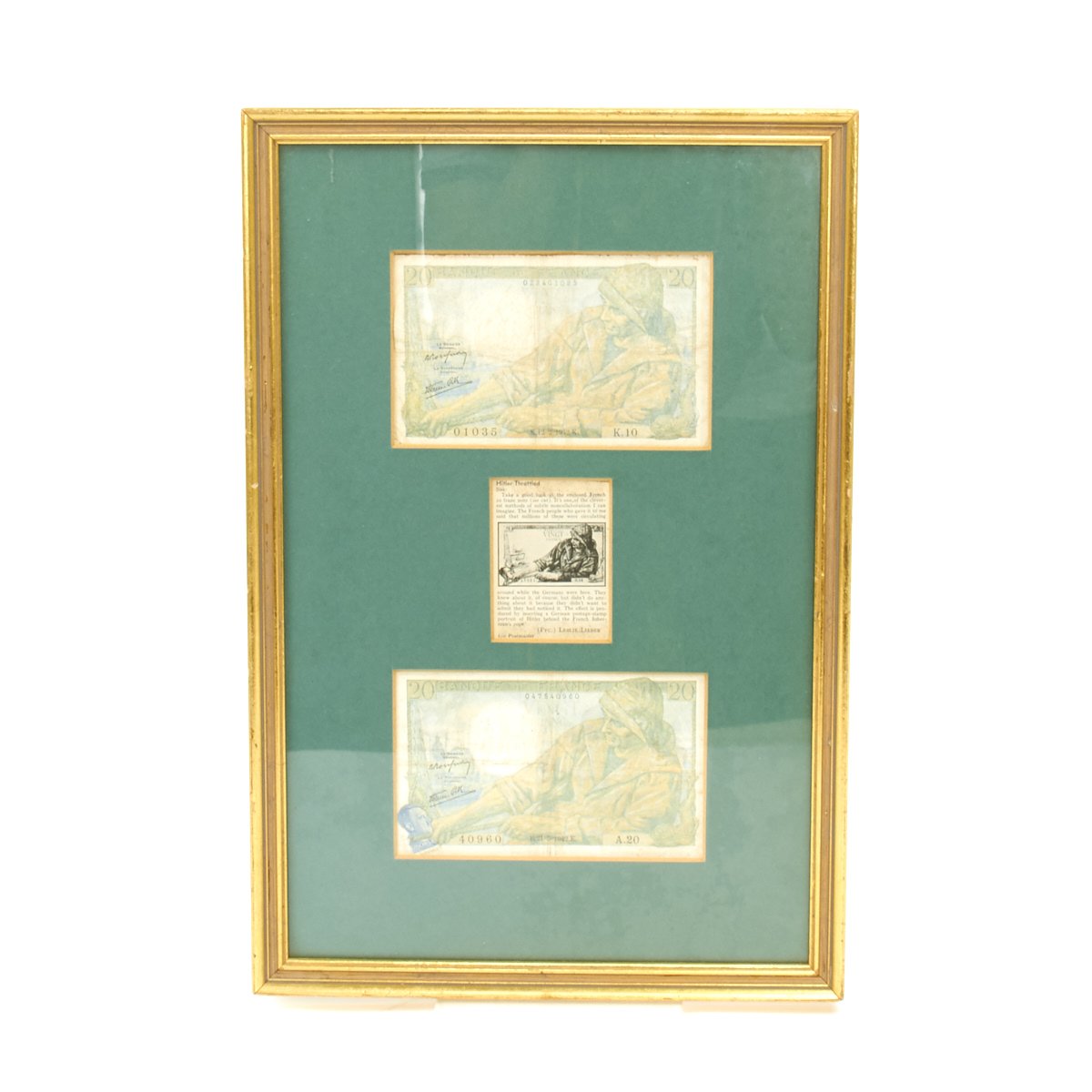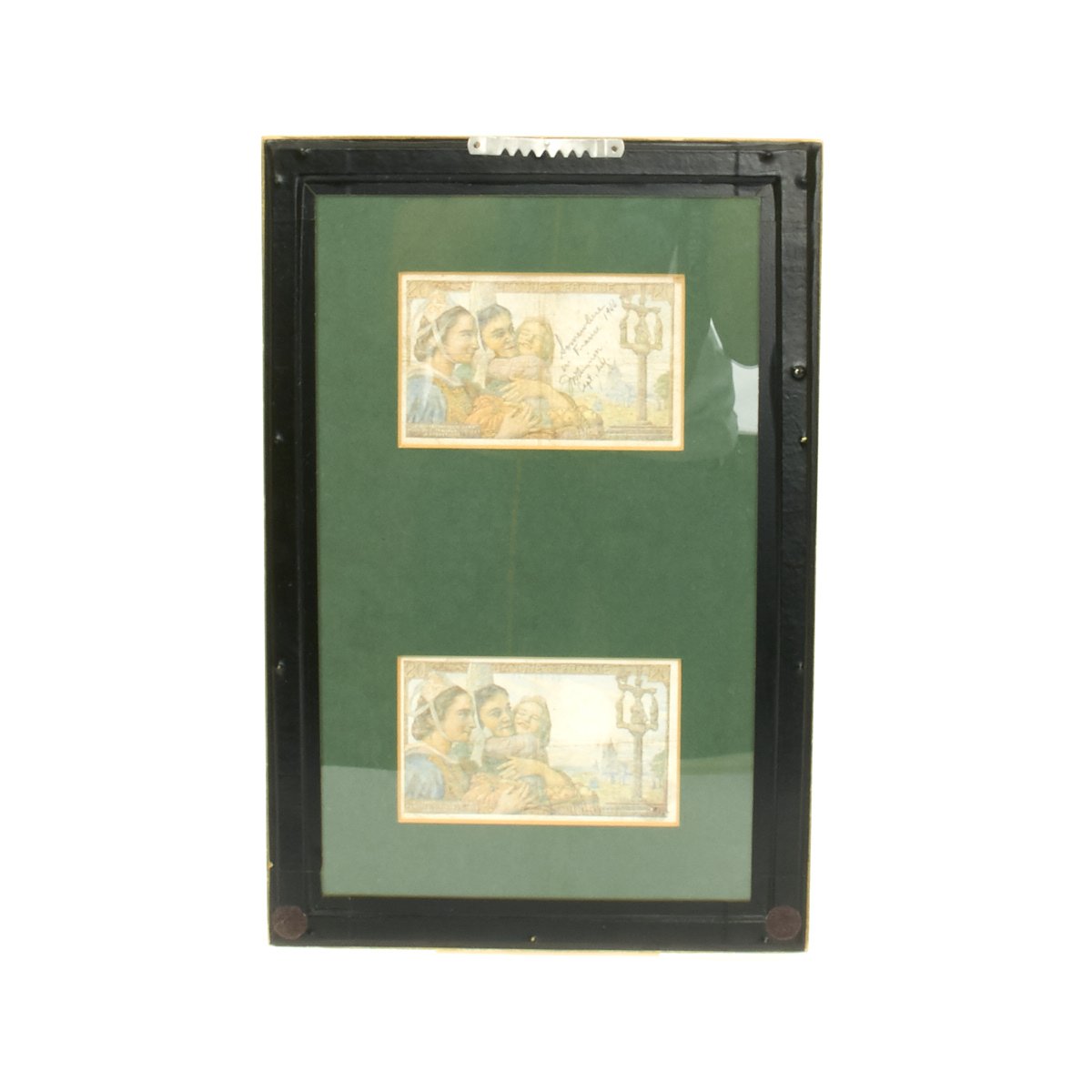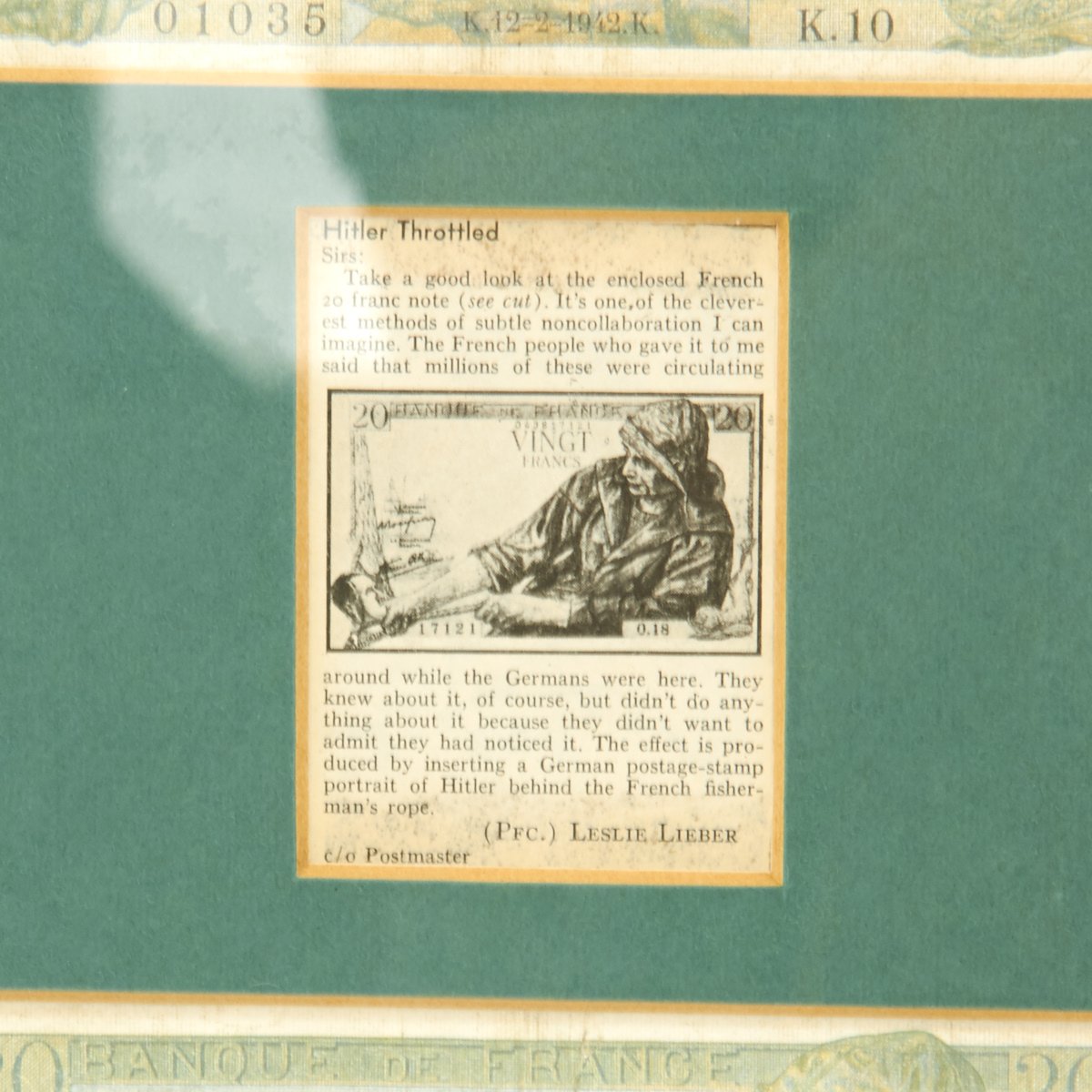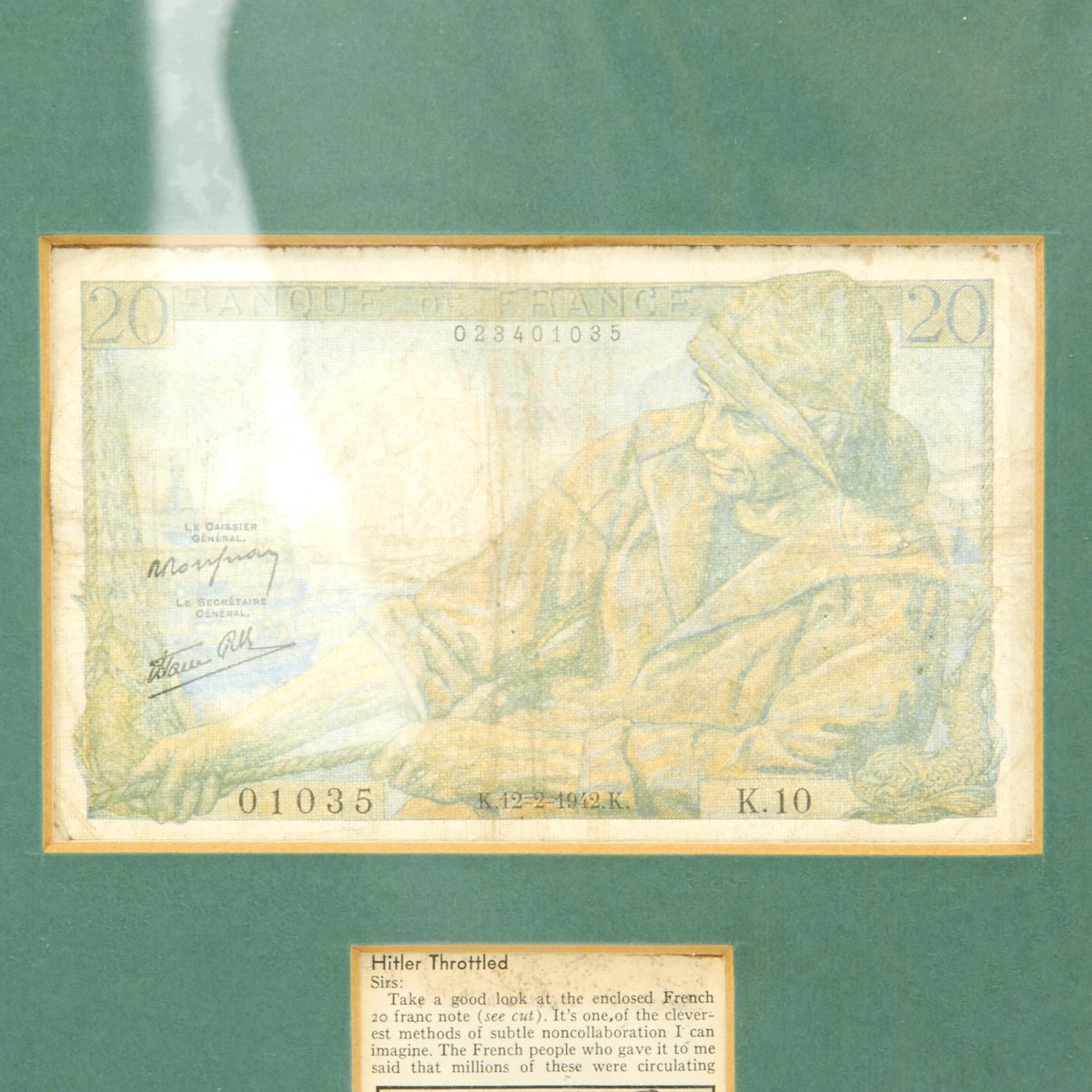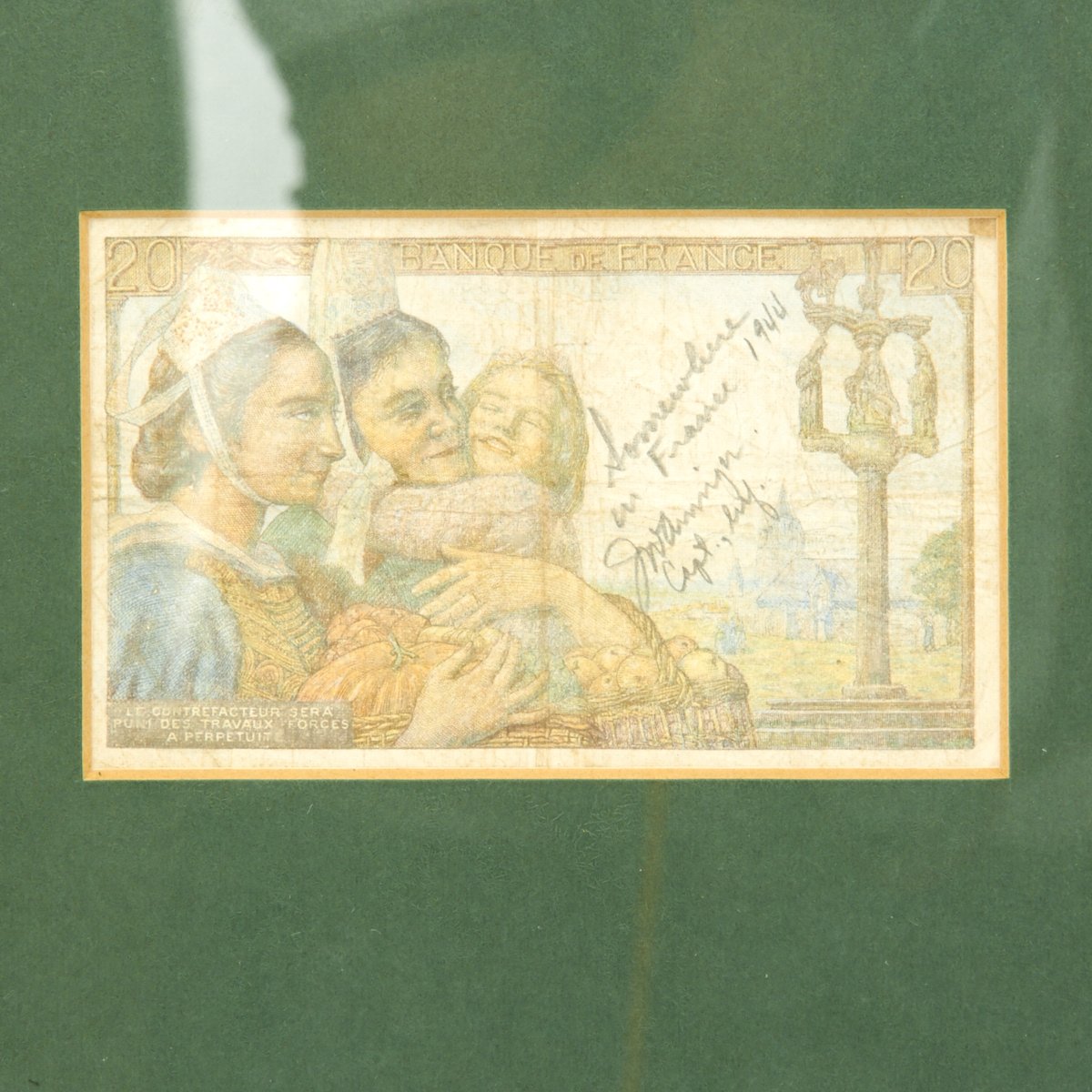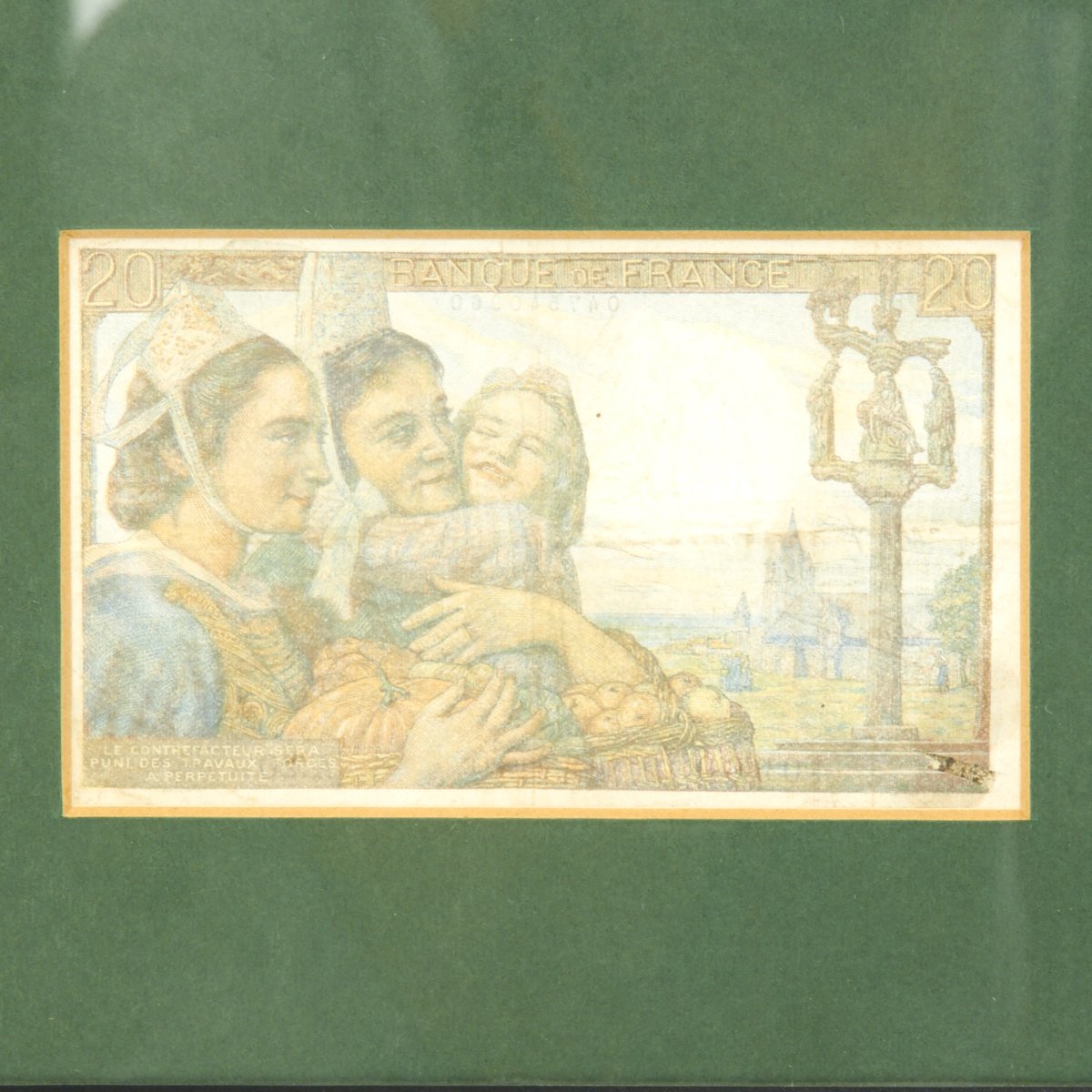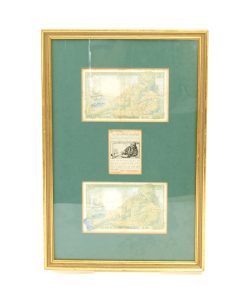Original French WWII Partisan Propaganda 20 Franc Note – Throttled! Original Items
$ 295,00 $ 118,00
Original Item: Only One Available. Some propaganda banknotes were produced by wartime partisan movements. Many of these notes were produced by the use of a pen, scissors, rubber stamp or small printing press.
The first banknote in this series is the Bank of France 20 francs note of 1942. In Coins and Medals, December 1968, there is a photograph of the face and back of such a note and the text:
AH and Petain mocked. D. C. Graddon has shown us this interesting French banknote. Cutting up postage stamps and affixing parts of them to occupation banknotes was one way in which the French showed their objections to the Germans during the Second World War. Although it seems a childish action, anyone captured with such a note in his possession faced the death penalty. The face depicts France strangling AH. The back shows Mother France nursing her baby Petain.
The note was cleverly defaced by cutting the AH portrait from the German stamps of 1941-43 and either pasting or inserting AH’s head above and below the rope being pulled by the Breton fisherman. The appearance was symbolic of France strangling Germany. On the back of this same 20 francs note there is a vignette of two French women in traditional dress. One holds a smiling child. Patriots are known to have taken the head of Marshall Petain from the French stamps of 1941-42 and placed it on the body of the infant. It is unclear just how this was construed as an anti-Fascist symbol. However, the purpose was certainly to send a warning message to the French leader and pro-NSDAP collaborator, Marshall Petain.
In all, there are three known formats of the French propaganda banknote. They are found with the AH stamp alone, the Petain stamp alone, or both stamps on one banknote. This example is with just the AH stamp alone.
Is there any proof that these notes were circulated in wartime France? In Time, 4 September 1944 there is a letter from Private First Class Leslie Lieber (cut article included with this set):
Take a good look at the enclosed French 20 franc note. It is one of the cleverest methods of subtle non-collaboration I can imagine. The French people who gave it to me said that millions of these were circulating around while the Germans were here … The effect is produced by inserting a German postage-stamp portrait of AH behind the French fisherman’s rope.
Years later, a second note was illustrated by Neil Shafer in an article entitled Bills by the Roll, in The Whitman Numismatic Journal, May 1968. Shafer told of purchasing a roll of 15 banknotes taped together and used as a short snorter during WWII. This was an informal membership card and souvenir that was carried to show where the owner had been and who he had met. As the owner traveled to more countries and was assigned to different units, he added more banknotes. His notes has dozens of signatures, one dated “January 28, 1945. Shafer states that when he inspected the roll at a later date he was amazed to find the infamous head of AH skillfully attached to the lower left corner of a French banknote:
The head is cut from a German postage stamp and at first glance it appears that Der Fuehrer is being strangled by the fisherman’s rope – exactly the desired effect.
The AH-stamp variety is known in two formats. First of all, they have been seen with the stamp cut into separate pieces and then pasted above and below the rope. A second specimen as is this example has the stamp inserted in two slits in the banknote, exactly as described by Lieber and Shafer.
After NSDAP Germany’s successful defeat of France in 1940 and the resistance to AH basically all having retreated to England the French people found many ways to display their distrust and loathing of the NSDAP Dictator.
Here is an example “liberated” after D-Day somewhere in France by an American Officer, a Captain in the Infantry. This frame displays two French 20 Franc bank notes each displaying a fisherman drawing on a rope. In the lower example a portrait of The Fuhrer from a German postage stamp has been let into the banknote so it now appears that the French Fisherman is throttling or strangling AH. Also included in the display is a newspaper cutting from Time, 4 September 1944 from Private First Class Leslie Lieber.
Interestingly although the German obviously noticed it was a subject that was never addressed by them. Interestingly there is an inscription on one of the Notes in ink that reads:
SOMEWHERE
IN FRANCE 1944
J. Wanninger
Capt. Inf.
Beautifully framed with glass to both sides os you can see both side of the notes measuring 15 x 10.
Fast Shipping with Professional Packaging
Thanks to our longstanding association with UPS FedEx DHL, and other major international carriers, we are able to provide a range of shipping options. Our warehouse staff is expertly trained and will wrap your products according to our exact and precise specifications. Prior to shipping, your goods will be thoroughly examined and securely secured. We ship to thousands clients each day across multiple countries. This shows how we're dedicated to be the largest retailer on the internet. Warehouses and distribution centres can be located throughout Europe as well as the USA.
Note: Orders with more than one item will be assigned a processing date depending on the item.
Before shipping before shipping, we'll conduct a thorough inspection of the items you have ordered. Today, the majority of orders will be delivered within 48 hours. The delivery time will be between 3-7 days.
Returns
The stock is dynamic and we cannot completely manage it because multiple stakeholders are involved, including our factory and warehouse. So the actual stock may alter at any time. It's possible that you may not receive your order once the order has been made.
Our policy is valid for a period of 30 days. If you don't receive the product within 30 days, we are not able to issue a refund or an exchange.
You can only return an item if it is unused and in the same state as the day you received it. You must have the item in its original packaging.
Related products
Uncategorized
Uncategorized
Uncategorized
Uncategorized
Uncategorized
Uncategorized
Uncategorized
Uncategorized
Uncategorized
Uncategorized
Uncategorized
Angolan Rebel 1970s era 60mm Inert Display Mortar from Angolan Civil War Original Items
Uncategorized
Armoured Fighting Vehicles of the World: AFVs of World War One (Hardcover Book) New Made Items
Uncategorized
Uncategorized
Uncategorized
Uncategorized
